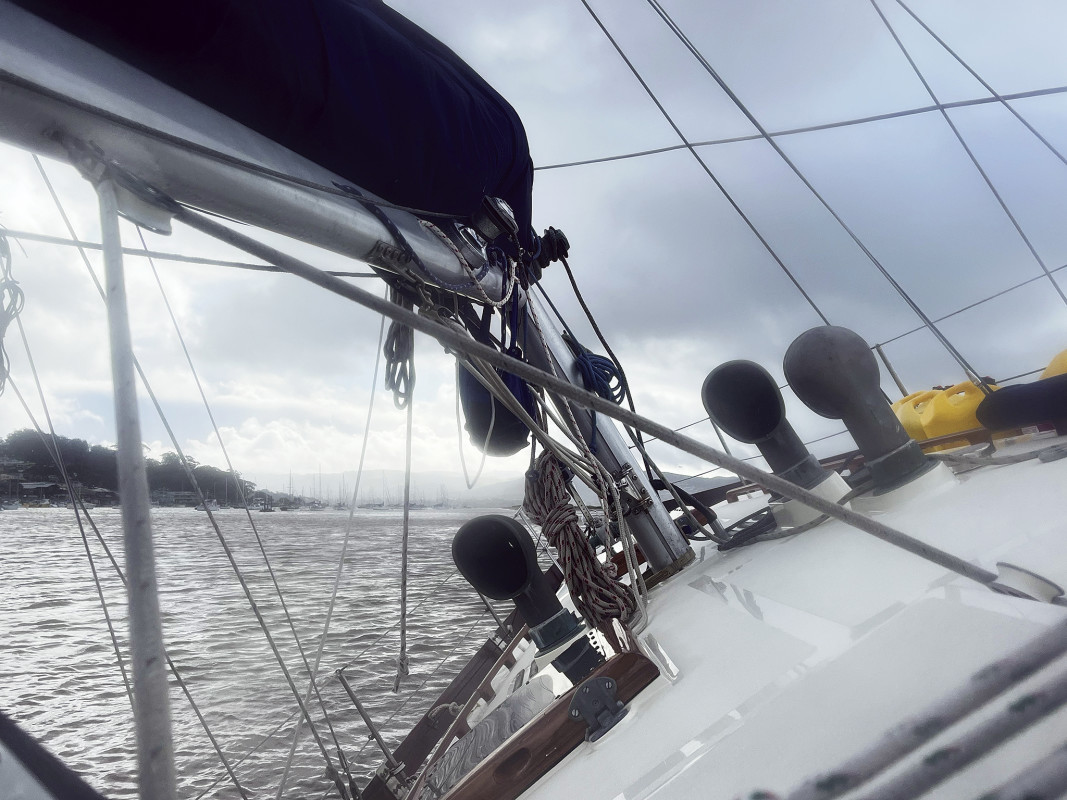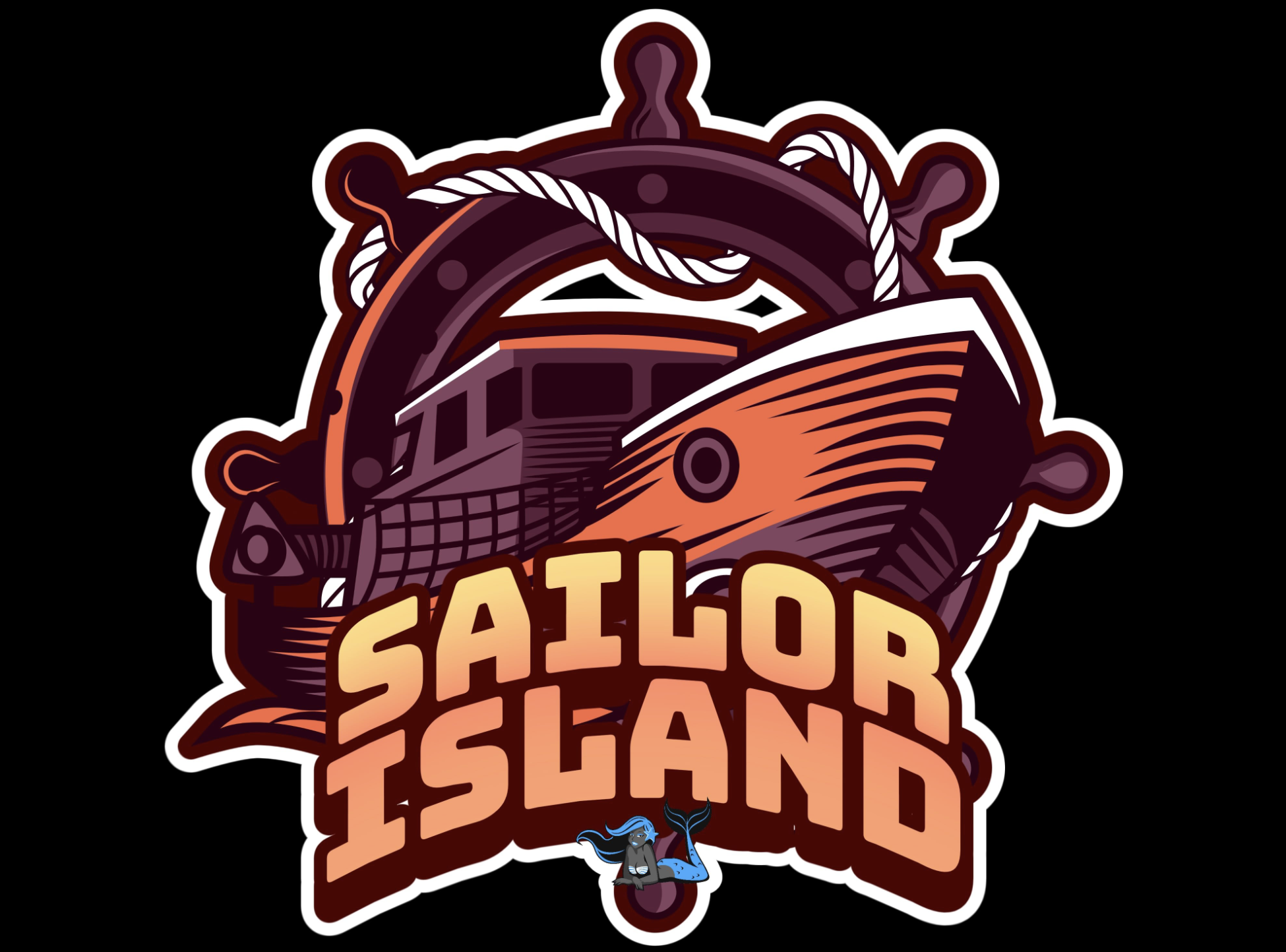

Picture: Marissa Neely
Our 1979 Cheoy Lee 41, Avocet, was anchored in Morro Bay in the course of the worst storm system the state of California had seen in 20 years. It had been two weeks of what appeared to be nonstop rain and excessive winds whereas we patiently waited for some type of climate window to soundly get round Level Conception—the Cape Horn of the West Coast. My husband, Chris, and I had performed our greatest to utilize our time on the hook, however the cabin fever had set in, and morale was at an all-time low. And what did mom nature do? Kick us, arduous, once we have been already down.
It was one other grey morning with the now-normal sound of rain pitter-pattering on the deck. We lay in our berth, tucked away from the chilly, and did our greatest to disregard that one other gloomy day had arrived all too quickly. The sound of the sturdy fleeting tide rushed beside the hull, whereas the wind opposed the tide, forcing Avocet to take the brunt of all of it on her beam. It was round 4:00 within the morning when the mild bumping of what we thought was simply shifting water turned violent, and our belongings started to cascade from starboard to port, slowly then . We have been itemizing closely, which might solely imply one factor: We had run aground.
Some individuals suppose that you simply have to be underway to run aground, and though generally that’s true, the nautical textbook definition is to be immobilized in water too shallow to permit your vessel to drift, which was most actually true for us. Chris did his greatest to tempo inside the cabin, considering rapidly whereas making an attempt to not lose his footing. It was 6:00 a.m., and we have been itemizing at 20 levels.

Picture: Marissa Neely
We had anchored in 25 ft of water at imply low tide the day earlier than utilizing our beloved Rocna Vulcan 55-pound anchor with 5:1 scope in anticipation of the sturdy northwest winds that blew all through the evening. It was the precise spot we had weathered 60-knot gusts from the earlier storms that month, solely pulling anchor to make use of the yacht membership’s lengthy dock for laundry and energy (since there was not sufficient solar to farm the photo voltaic). The water was lots deep in all instructions with a 7:1 scope throughout these earlier storms. We had thought there can be no points this time round, however we hadn’t anticipated what these storms had performed to the underside.
Someplace round 4:00 a.m., the wind flipped to a faint easterly on the identical time the tide started to ebb, finally pushing the boat towards a freshly prolonged sandbar that the latest storms had created. It was a foot deep round solely our keel, and 10 ft down off our stern and bow, however with our 6 1/2-foot draft buried deep, we have been positively not going wherever for some time.
“Harbor Patrol mentioned they might possible do extra harm than good in the event that they tried to drag us out, so let’s attempt to kedge,” Chris mentioned as he opened the companionway door to let the shock of daylight pour inside. He used our dinghy to deploy our stern hook, a 10-pound Fortress 16, 200 ft off our port aft quarter, and used our major hook as a second anchor level. As a substitute of winching our major in from the bow, we introduced a 75-foot snubber line midship, utilizing the mast winch at the side of the kedge anchor to drag us again off the sandbar. That was the plan, however first we needed to look ahead to the tide to come back again in, which was not till 6:00 p.m. that evening. Which means it was going to be a really lengthy day.
As Avocet listed increasingly more, we discovered ourselves making an attempt to make one of the best of our scenario, which was arduous since we have been giving Morro Rock a run for its cash as the primary attraction for the onlookers strolling alongside the embarcadero. It was odd to have the ability to see the horizon out of our hatches, watching the water creep increased up the port aspect, hoping it wouldn’t spill over and beneath our bulwark.
As we tactfully hid from the tour boats filled with photo-happy vacationers and paddle boarders that circled us, we acknowledged the sound of a well-known outboard approaching.
“I see you’ve careened your self to scrub the underside, how intelligent!” our good friend Reid introduced. He and his pup Ellie dwell aboard a Landfall 39 moored in Morro Bay, however earlier than boat life Reid had referred to as the realm house since he was only a child. Though he did his greatest to guarantee us that we weren’t the one ones to have run aground within the Bay, the fixed gaze of these onshore didn’t make us really feel like all much less of a freak present.
Finally the tide returned, and as Chris winched us out, Avocet freed herself from her muddy restraints with a triumphant “pop.” Since she has an encapsulated modified fin keel and powerful tumblehome we noticed no indicators of misery, remaining grateful we discovered ourselves in sand holding slightly than rocks.

Picture: Marissa Neely
The rain had simply began once more because the solar set over the breakwater, so we continued with the subsequent section of our plan below spreader lights. We introduced in some scope from our major anchor and started to retrieve our secondary that had acted as a kedge. Chris dinghied out as he collected the road solely to find that the Fortress was very, very caught. We initially thought it had fouled on our major, however we pulled up the Rocna with no subject, that means that the Fortress was caught on one thing else. Because it wasn’t going wherever and the rain had intensified, we determined to make use of it as our major hook for the evening till we might attempt to retrieve it with the windlass and opposing tide within the morning.
Waking to the sound of birds and sunshine spilling by the cabin was rather more nice than the impolite awakening of the day earlier than. After our morning espresso we started the motions of retrieving the Fortress, which was a lot simpler with the assistance of our windlass.
“You have been the discuss of the city!” new pals mentioned as they circled us of their dinghy. After we shared how we ended up within the predicament, they assured us we had joined a prestigious membership of sailors who had shared the same story in Morro Bay.
What We Did Proper
For the long-term cruising we do in generally sketch locations, we selected a ship with an encapsulated keel, slightly than a bolted-on fin. That meant she might deal with being unintentionally careened with out harm.
We didn’t freak out (though it was unnerving seeing the water coming nearer to the bulwark).
We referred to as the Harbor Patrol and knowledgeable them of our scenario.
We developed a plan to kedge off and executed it correctly when the time and tide have been proper.
What We Did Mistaken
On reflection, we must always have rolled out of our berth at 4:00 a.m. once we first felt the boat bumping unusually—the primary indication of grounding. Had we realized what was happening, we might have had time to herald some scope, pulling us out in direction of the deep water close to the channel the place our hook was.
Maybe we must always not have assumed that all the pieces had stayed the identical on this anchorage after the depth of the earlier climate. Asking for more moderen native data earlier than anchoring in the identical place might need been instructive.

August/September 2024
Trending Merchandise
[product_category category=”trending” per_page=”8″ columns=”2″ orderby=”date” order=”desc”].
